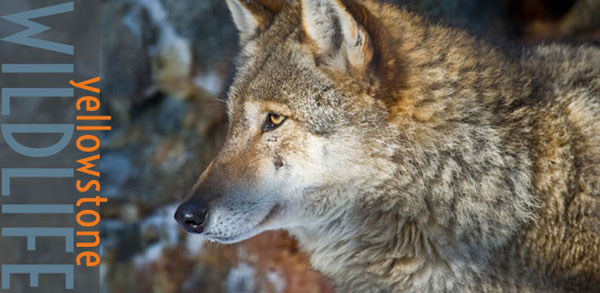
THE EXPANSIVE 20 million acre Greater Yellowstone Ecosystem is the largest continuous area of mostly undeveloped land in the continental United States, and is the largest intact ecosystem in the northern temperate zone. The area is home to diverse flora and fauna with over 1700 species of vascular plants such as trees and bushes being native to the area.
Lodgepole pine is the most common tree in the Yellowstone region with other tree species including Subalpine Fir, Engelmann Spruce, Douglas Fir, Whitebark Pine and Ponderosa Pine Quaking Aspen and willows. Most flowering plants bloom during the summer months of May through September. The Yellowstone San Verbena is a flowering plan found only in Yellowstone National Park around the shores of Yellowstone Lake.
Exotic (non-native) plants in Yellowstone pose a serious threat to the delicate ecosystem. They can crowd out native species and spread very quickly. These plants are most commonly found in areas with heavy tourist traffic, indicating that they were spread by human visitors.
With almost 60 species of mammals in Yellowstone Park, it is considered the best wildlife habitat in the lower 48 states. Some of the most impressive animals in the Park include gray wolves, grizzly bears, lynx, bison, black bears, white-tailed and mule deer, elk, mountain lions, bighorn sheep, pronghorns and mountain goats. Gray Wolves were protected by the Endangered Species Act and subsequently reintroduced to Yellowstone in 1995-96 following decades of hunting. The reintroduction has been so successful throughout Montana, Wyoming and Idaho that the Gray Wolf was removed from the endangered species list in 2008.
Grizzly bears are another endangered species that has been able to recover successfully in Yellowstone. The current population is estimated to be 600 bears. Elk are the most populous mammal in the Park at 30,000 individuals. The migration of the southern herd of elk in Yellowstone National Park is the largest herd migration in the continental U.S.
There are eighteen species of fish in the Yellowstone Ecosystem including Yellowstone cutthroat trout. The park is also home to six species of reptiles and four species of amphibians. Whooping cranes and Bald Eagles make Yellowstone extremely popular with bird watchers. Other rare birds in the Park include the Peregrine Falcon, Harlequin Duck, Osprey, Common Loon and Trumpeter Swan.
Yellowstone National Park is one of the few places that wild bison still exist. With an estimated population of 60 million in North America before the westward expansion of the United States to fewer than 50 individuals in the Park when it was created, the bison population is treasured.
Also home to extremophile bacteria found no where else on Earth, Yellowstone National Park is a place of primary interest for biological researchers. Some of the most primitive life forms in the world, the hypothermophilic bacteria found in the hot pools in Yellowstone are providing clues about where to look for life on other planets. These microorganisms are also being investigated for their ability to survive in such hostile environments as well as potential cures for diseases.
